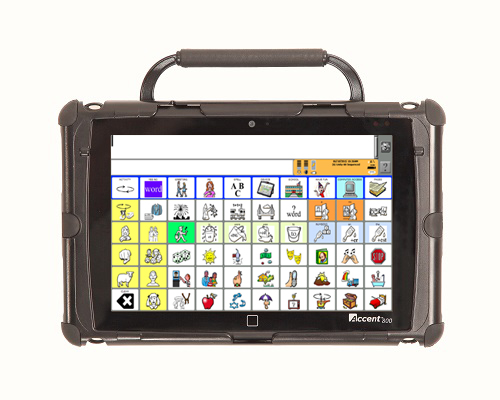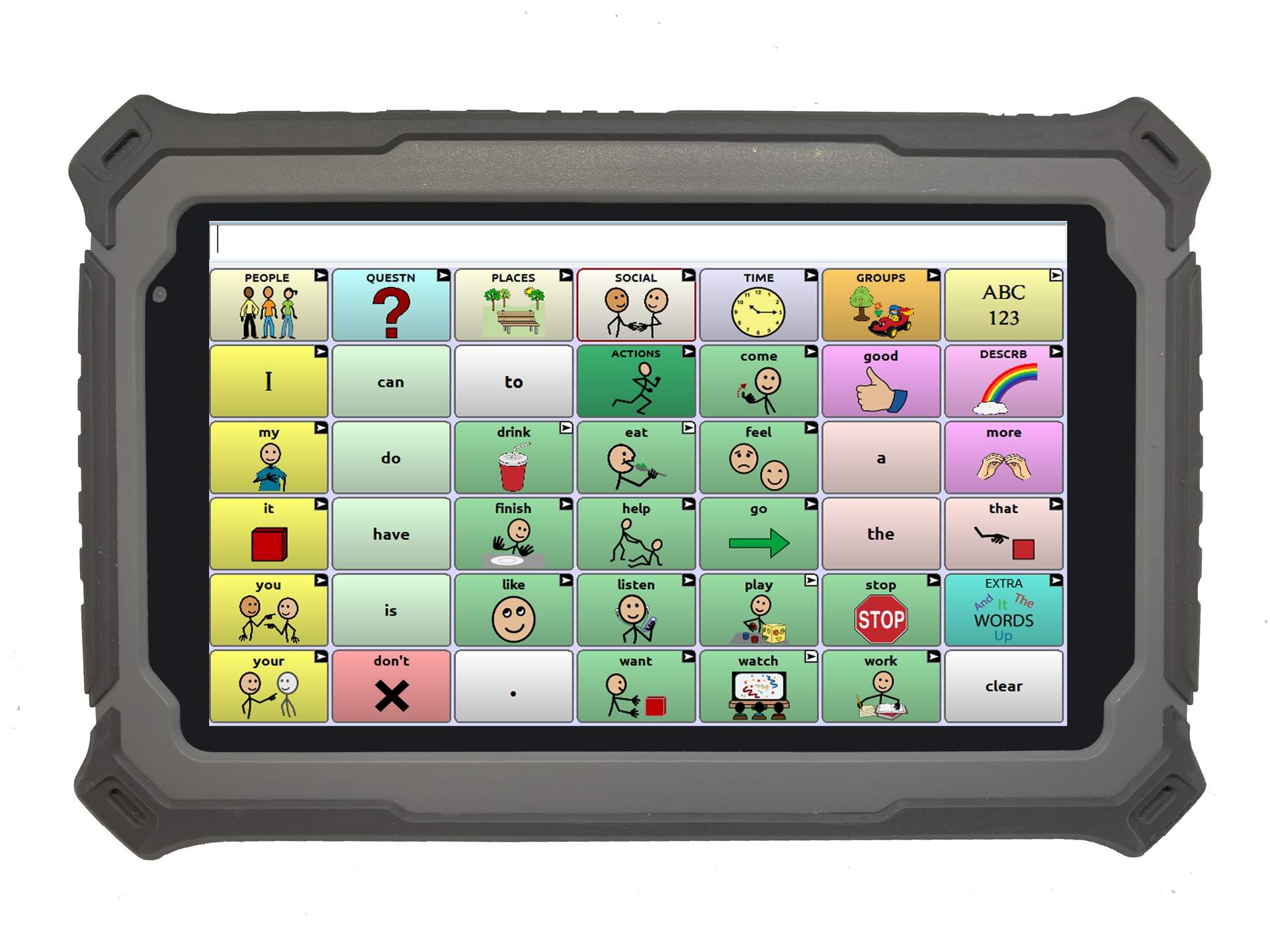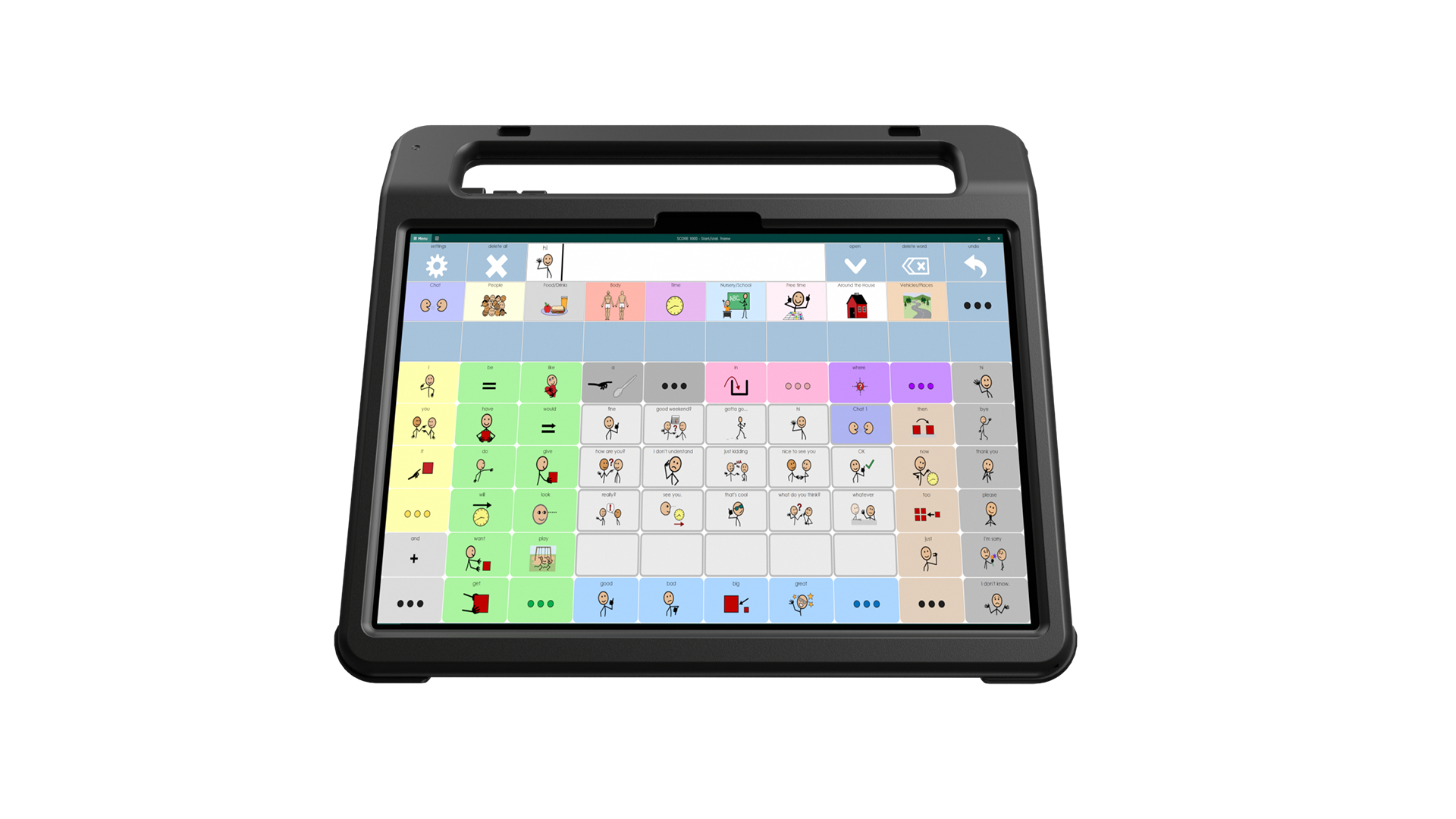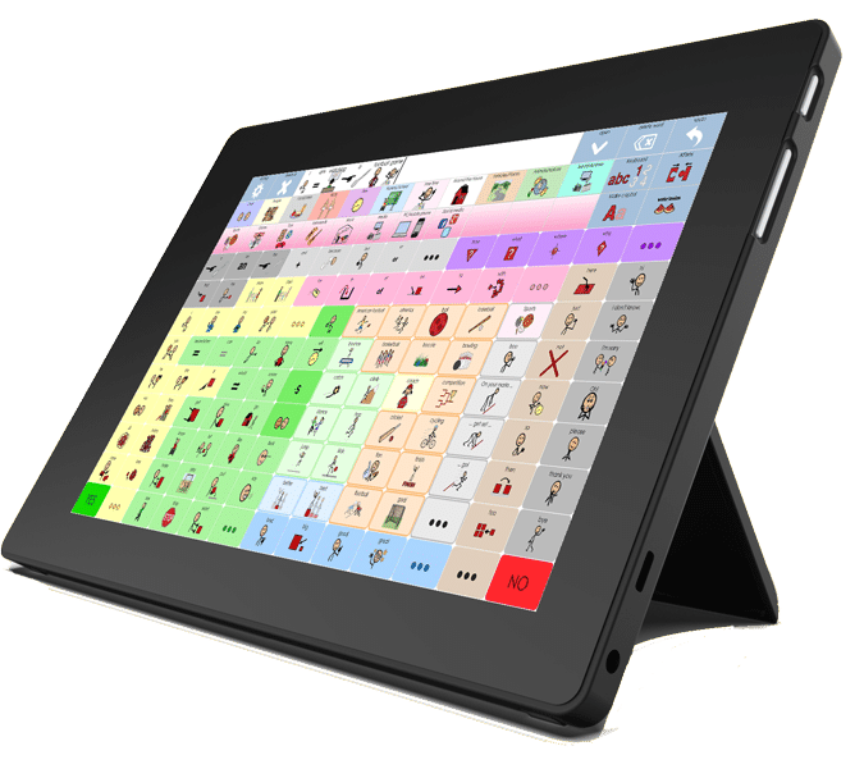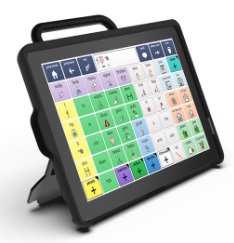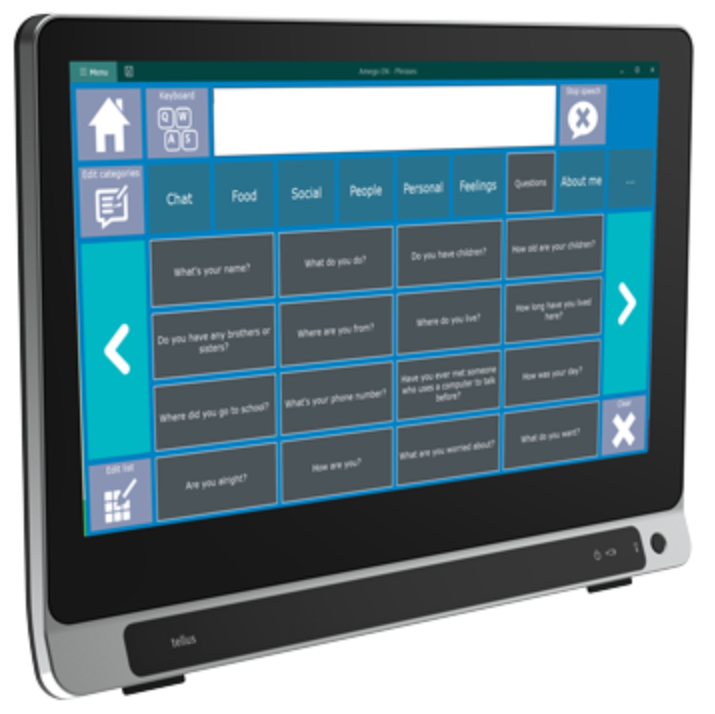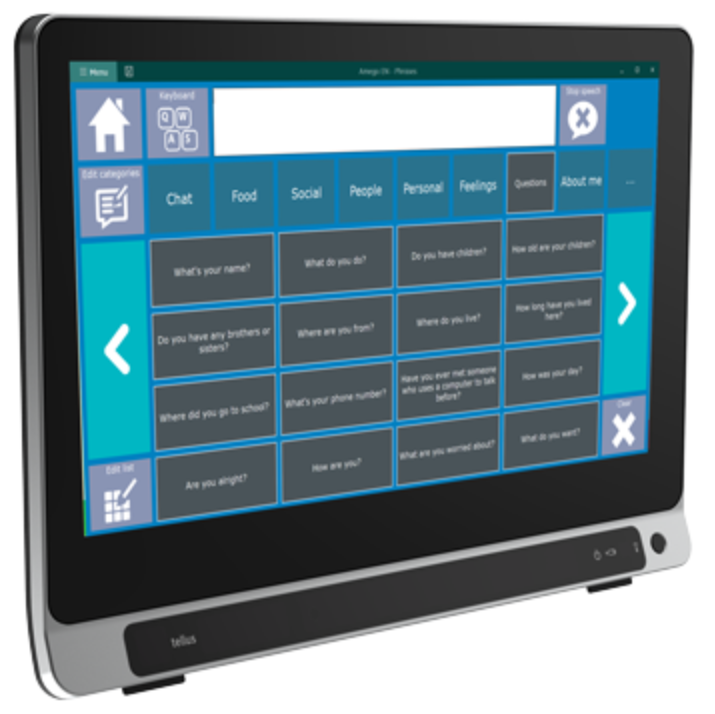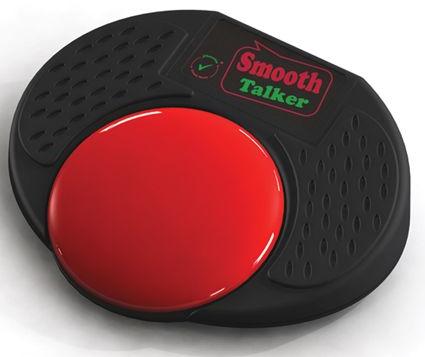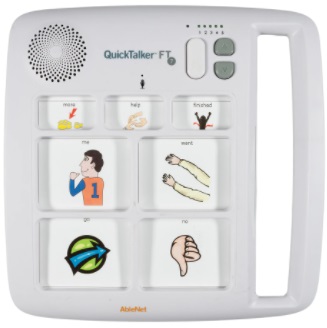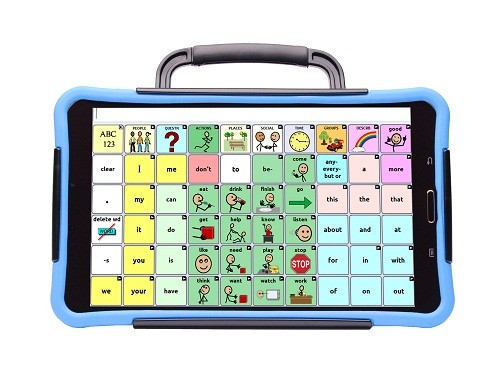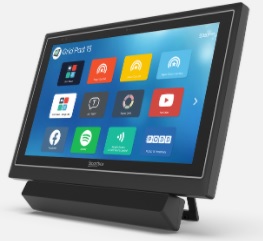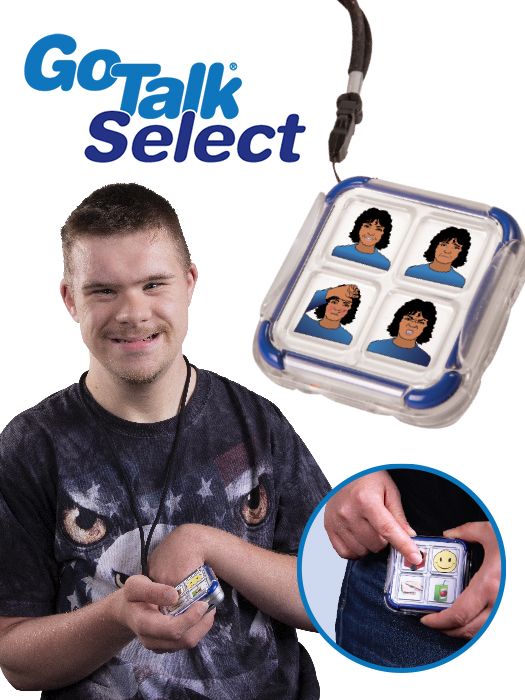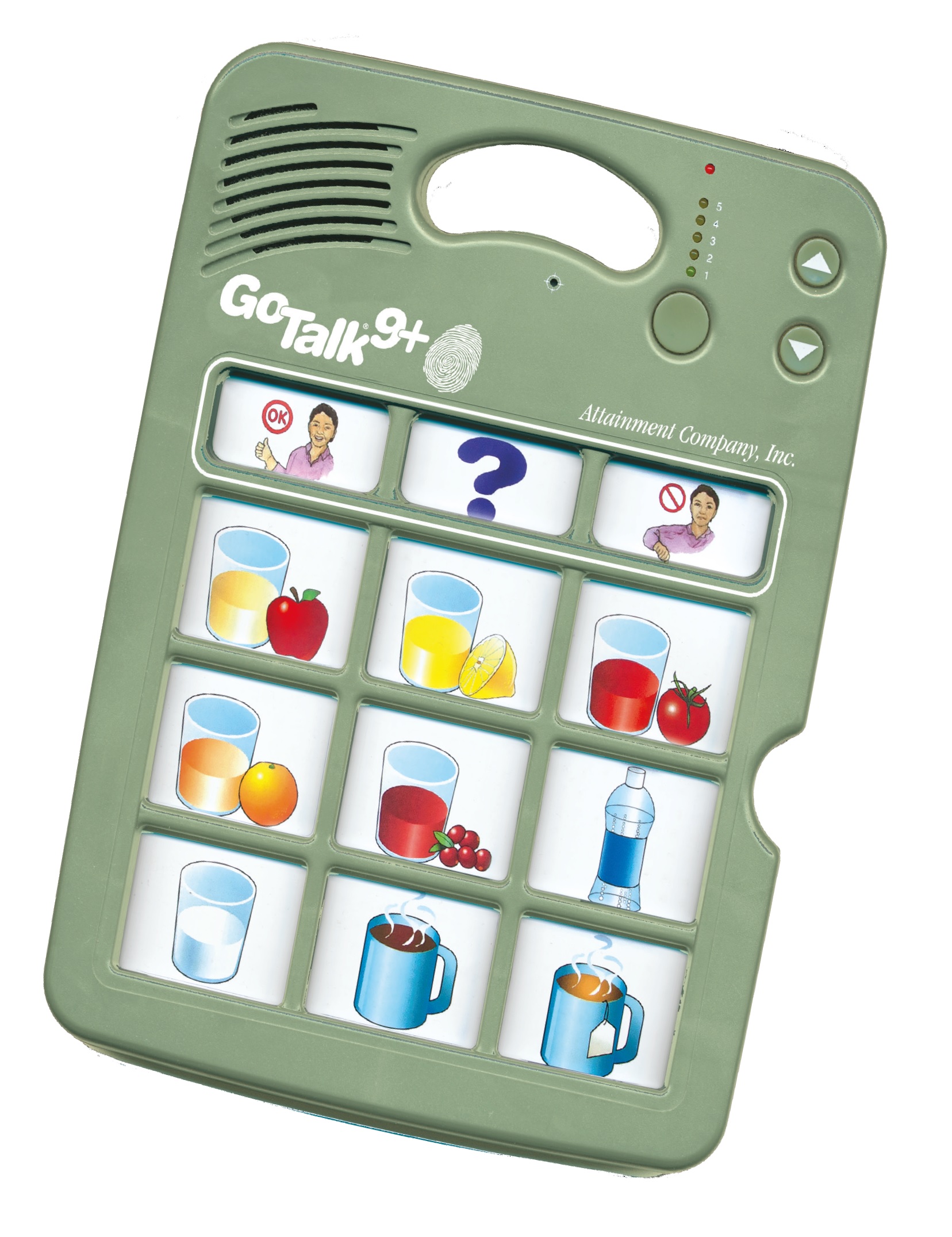Multiple message communication devices
This section includes multiple-message devices that can help an individual to communicate with others. Some are handheld, others are suitable for mounting on a desk or wheelchair. Multiple-message devices have the capacity to store two or more messages.
Communication aids with direct selection. This means the device has symbols on buttons or cells which you press to generate speech output. They may have as few as one or two messages to choose from, or they may have hundreds of messages. The speech output may use digitised speech, synthesised speech or both. Digitised messages are created by recording spoken words directly into the communication aid which can be re-recorded as your needs change. Synthesised speech is artificial, computer-generated. The larger the button or cell size, the less hand control is required to press the button or cell. If you do not have enough hand control or strength, you may prefer communication aids with switch input.
Communication aids with speech output and switch input scanning selection. This means they can be used if you have a disability which results in difficulty pressing a button, key or touchscreen icon. They contain a number of squares which can be lit sequentially or in programmable patterns. Symbols are placed on the squares and you stop the light by activating a switch when the required symbol is illuminated - the selected message will then play. The use of switches allows access through any controllable movement of your body. They can be purchased pre-loaded with icons, but generally you can also add other icon sets or personal images such as photos. Many have touchscreen displays that allow you to change the content and layout of what appears electronically, without overlays. The speech output may use digitised speech, synthesised speech or both. Digitised messages are created by recording spoken words directly into the communication aid. Synthesised speech is artificial, computer-generated speech.
Communication aids with text input via a standard or a touch screen keyboard. You type whatever you want to say and the message is produced by text-to-speech. The speech output may use digitised speech, synthesised speech or both. Digitised messages are created by recording spoken words directly into the communication aid. Synthesised speech is artificial, computer-generated speech. An advantage of this type of communication aid is that is doesn't depend on pre-recorded messages - they speak anything you can type.
